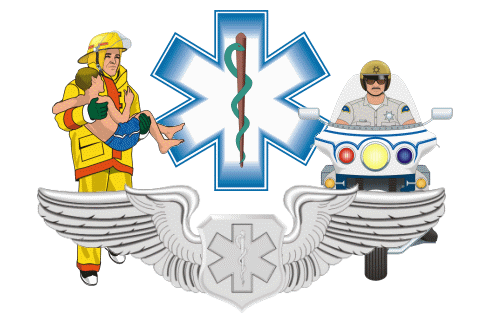In recent years the emergency medical services, in conjunction with mental health professionals, developed a program known as Critical Incident Stress Management or CISM.
When a critical incident occurs, a debriefing should take place within 24 to 72 hours of the incident. During the debriefing, the individuals involved in the critical incident meet with a team of peer counselors and mental health professionals to discuss the incident and begin processing and working through it.
A CISD is held in 7 phases;
Introduction: Individuals are assured that everything discussed during the debriefing will be kept confidential. Nothing
said in the debriefing will affect their job in any way.
Facts: Individuals get to go over actual details of the critical incident.
Reactions: The group members discuss their reactions about what happened.
Symptoms: The members are encouraged to discuss any mental, physical or emotional symptoms they experienced during the incident.
Teaching: The debriefers help the members sort out their feelings and the symptomsthey described. They help them to see that their reactions are normal.
Re-entry:The debriefers evaluate information discussed in the meeting and offersuggestions as to how the participants can deal with the stresses and actually help them form a plan for returning to their job. If needed, plans are made for
follow-upactivities or treatments.
Follow-up: Follow-up can be held weeks or months later if needed to address any unresolved issues
A debriefing should include everyone involved in the incident; nurses, police, EMS workers, fire and rescue personnel. In some case it may even be appropriate to include spouses, as they are the ones who are so frequently exposed to the after effects of critical incident stress.
Another specialized version of CISD is known as "Defusing". Defusing is an abbreviated, earlier form of CISM that usually
involves only the people who were the most directly involved in the incident. It usually last less than an hour and sets the stage
for later full debriefings. In the Oklahoma City bombing, as emergency workers finished their shifts, they attended defusings and
later debriefings.
CISM works by helping individuals vent their reactions rapidly. This aids in the more rapid processing and assimilation of the
experiences and emotions that occurred in response to the critical incident. When CISM is properly utilized it drastically
reduces the subsequent development of symptom's of posttraumatic stress and professional burn-out.
CISM Texts and Study Guides:
(to order click on the book title)
Critical Incident Stress Management (CISM) : A New Era and Standard of Care in Crisis Intervention
~
by George S.,Jr Everly, Jeffrey T. Mitchell, Published 1999
Price: $27.00
Critical Incident Stress Debriefing : CISD : An Operations Manual for the Prevention of Traumatic Stress Among Emergency and Disaster Workers
~
by George S.,Jr Everly, Jeffrey T. Mitchell, Published 1995
Price: $32.00
Critical Incident Stress Debriefing : CISD : An Operations Manual for the Prevention of Traumatic Stress Among Emergency and Disaster Workers
~
by George S.,Jr Everly, (editor), Published 1996
Price: $29.00
Human Elements Training for Emergency Services, Public Safety and Disaster Personnel: An Instructional Guide to Teaching Debriefing, Crisis Intervention and Stress Management Programs
~
by Jeffrey T. Mitchell, George S. Everly, Published 1994
Price: $32.00
Critical Incident Stress Management Internet Links:
ICISF - International Critical Incident Stress Foundation
START - Surface to Air Response Team (Air-Medical) CISM Team
ISTSS - International Society for Traumatic Stress Studies
Traumatology
SARBC Search and Rescue of British Columbia (has CISM specific areas)
FMBA - Fireman's Mutual Benevolent Association CISM Network
Granite State CISD Team
Athens, Ohio CISM Team
Australian Critical Incident Stress Management and Peer Support
Hocking Valley, Ohio CISM Team
Kenawha, Ohio CISM Team
Michigan Crisis Response Association
North Dakota CISM System
San Luis Valley, Colorado Critical Incident Team
South Teir Regional EMS CISM Team, Elmira, New York
Texas Critical Incident Stress Network
Victoria, Australia Emergency Services CISM Team
E-mail comments Here! Or return to the Seaox Air-Medical Homepage
Last modified on 30 November 1999.

